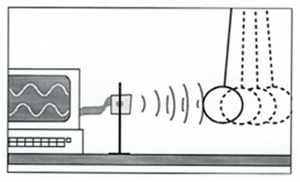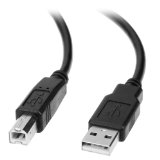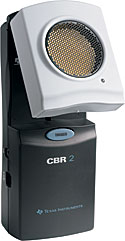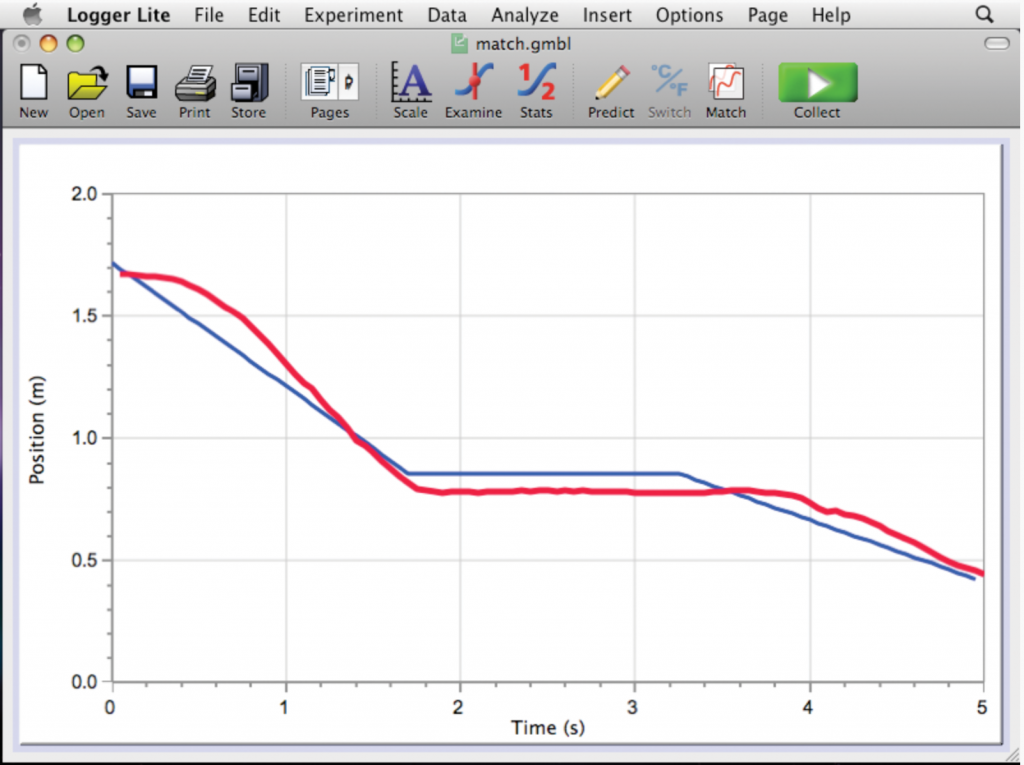Linear Functions in Motion
This is a TI-CBR2, sometimes called a sonic ranger. No, not that kind…
A sonic ranger measures the distance to a moving object by bouncing ultrasonic sound off the object and timing the echoes. The data, taken about every 0.05 sec., is read into a computer, which then plots the distance, velocity, and acceleration.
We can use CBR’s (Calculator Based Rangers), like in the picture, to collect data about our position from the ranger as a function of time.
 The CBR’s work with TI-84’s or with computers, using free Vernier software, called Logger Lite. Either way, you will need a USB 2.0 Type A to B Cable.
The CBR’s work with TI-84’s or with computers, using free Vernier software, called Logger Lite. Either way, you will need a USB 2.0 Type A to B Cable.

(A class discussion on the computer and small group experimentation on the calculators worked well.)
In this screenshot, a person is moving – creating the bumpy red line while trying to re-create the smooth blue line.
Describe how the position of the person changes over time.
Think about whether she is moving toward the CBR or away from it.
What does the horizontal part represent?
When is she walking fastest?
Here are some lesson worksheets:
The following is a matching activity for groups of 3 students. Print the graphs, tables, and functions on different colors. Each student gets one colored page to cut apart and one page of the unfilled boxes. He or she must each use one dot of glue to affix their representation to the box under the scenario it fits. Switch papers until all of the boxes are filled. When students are all done, they confer, rearrange as needed, affix the pieces more firmly, and then take turns demonstrating/presenting to the class.
This lesson gives kids a good feel for slope as rate and intercept as starting point. And they like it!!



